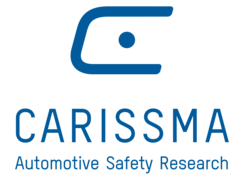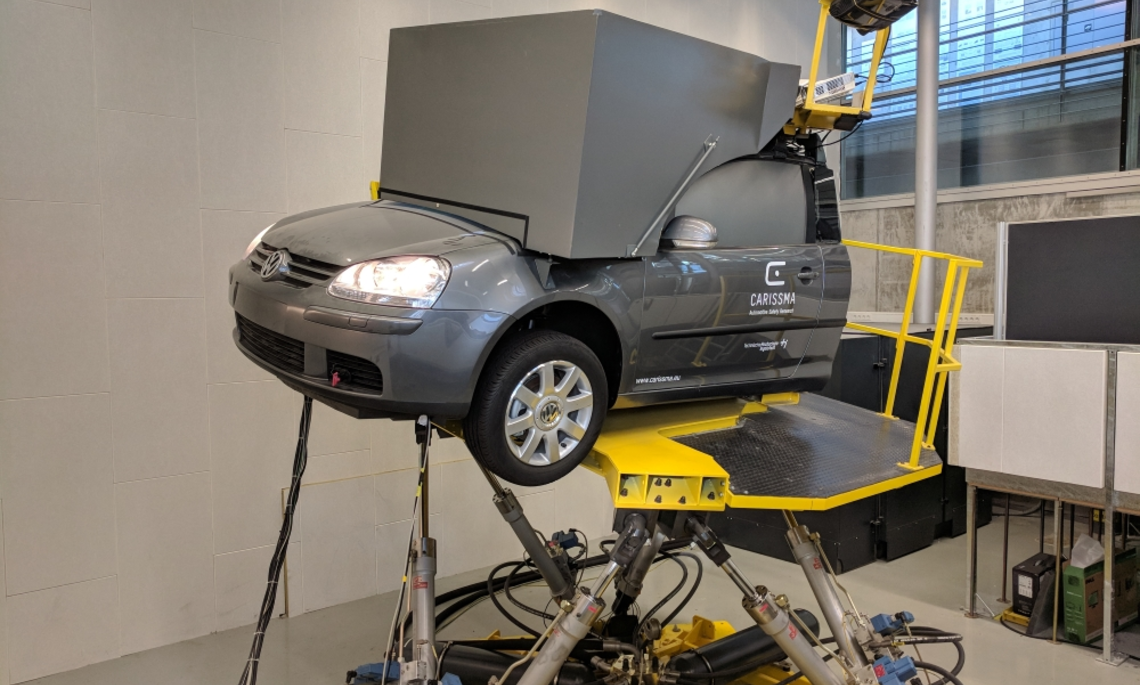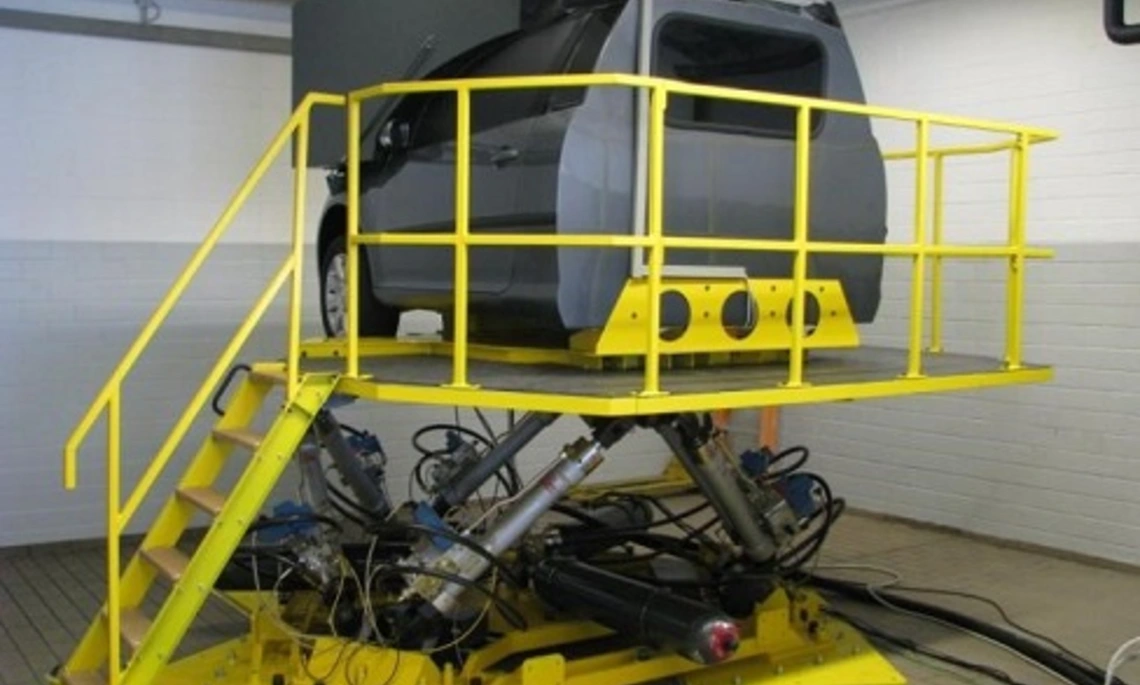Controlling a vehicle with your own smartphone or tablet? An automated vehicle that observes the driver and adapts his actions to changing conditions? An augmented-reality ‘heads-up display‘ that places relevant information directly on objects in the external space? In the CARISSMA driving simulation laboratory nothing is impossible. Researchers demonstrating already today, how people will be interacting with vehicles in the near and more distant future and on different automation levels.
The spectrum of possibilities ranges from fundamental research (for example into the topic of motion sickness) and evaluations of driving behavior and user wishes to the implementation and testing of prototypes for future interactive concepts or human-machine interfaces (HMI) in vehicles – always with the goal of enhancing both the safety aspect and the user experience (UX). This incorporates the use of the latest measuring instruments and procedures, such as eye tracking, ECG or EEG.
Research activities conducted in the driving simulation laboratory are based on the research programme of the CARISSMA research and test centre.
Driving Simulator (Hexapod)

A series of simulators are available for use in studies involving test persons. Depending on the requirements, these studies can be conducted either in virtual reality or in a static context. The heart of the laboratory is its dynamic driving simulator (Hexapod test bench). This consists of a real-life semi-vehicle (VW Golf) mounted onto a hydraulic motion platform. Images are projected onto the windows of the driver cabin, which can be moved in six degrees of freedom, by a total of four projectors plus an additional monitor for the rear-view mirror. The aim of this simulator is to provide a high level of realism to test persons and, thus, to induce as much as possible driving experience. In addition, the interior of the vehicle has been modified such that the instrument cluster, the centre console and the passenger area can be covered by a variety of tablet computers to test new interaction concepts and assistance systems.The CARISSMA ‘Human Computer Interaction Group’ (HCIG) research team possesses extensive competence not only in the fields of automated driving, human factors, augmented/virtual reality, prototyping of human-machine interfaces, usability research, and user experience design, but also in statistics and psychology, and has already won several awards at international conferences.
Equipement
Modified section of a VW Golf, hydraulic platform, video monitoring and communication system, high-sensitivity steering system with force feedback, modern computers for realistic simulation and visualisation of manual and automatic driving scenarios. The software employed is IPG CarMaker and Vires VTD.
In addition, several low-fidelity driving simulators are available (seat box with Logitech G27 steering wheel and three 55“ monitors, etc.) for conducting simpler, low-cost studies, aimed particularly at student projects and preliminary studies.
Several tablets of various sizes and features (e.g. Google-Pixel C 10“, NVIDIA Shield 8“) can be mounted in the modified interior of the driver cabin for a variety of use scenarios. The laboratory is also equipped with a number of different LeapMotion gesture and RealSense depth cameras, as well as Myo wristwatches, Arduino prototyping kits, and much more. A 3D printer (Ultimaker 2+) is also available to enable rapid realisation of hardware prototypes.
The VR/AR equipment comprises several virtual reality headsets (HTC Vive, Oculus Rift) and augmented reality devices (Microsoft HoloLens, Cardboards) including motion tracking as well as powerful notebook computers. This equipment (e.g., the pedestrian simulator) enables the simulation of complex environments for vulnerable road users as well as the realisation of AR/VR applications for drivers/passengers of future vehicle generations.
By employing the latest physiological measuring technology, every last detail can be revealed. Professional ECG/EEG/GSR equipment (gtec, Empatica) as well as eye-tracking glasses (Tobii Glasses Pro2+, PupilLabs) are available in the laboratory, as are a range of RGB and depth image cameras (Intel Realsense, GoPro) that are able to detect even the smallest reactions of test persons and to classify them by means of a software framework (Affectiva Emotion API).
With the aid of a software framework that was developed in-house, all equipment and software components can be synchronously controlled, data can be dynamically exchanged between them, and new components can be easily integrated. This ensures a reproducible test procedure and dynamic prototypes that can be quickly implemented.
Example applications
- User studies of safety-critical factors at different levels of automation (e.g., take-over requests (TORs), driver monitoring, automation trust, etc.) and for determining the acceptance of new ADAS systems (AEB, etc.)
- Evaluation of alternative ‘shared-control’ interfaces for future vehicle generations
- Vehicle condition monitoring (fatigue detection, attentive user interfaces) for enhanced drive-vehicle communication and interaction
- Prototyping of future vehicle interiors in automated vehicles (cf., the mobile office)
- Implementation and evaluation of applications for full-format AR displays in vehicles (so-called windshield displays, WSDs)
- International road safety studies
- Driver interfaces for integration in HIL and general vehicle test benches in the modular safety laboratory vehicle (CARISSMA test bench network)
Team
Prof. Dr. techn. Priv.-Doz. Andreas Riener
Phone: +49 841 9348-2833
Room: B210
E-Mail: Andreas.Riener@thi.de
Thomas Hempen, M.Sc.
Phone: +49 841 9348-6421
Room: P303
Fax: +49 841 9348-996421
E-Mail: Thomas.Hempen@carissma.eu






![[Translate to English:] Logo Akkreditierungsrat: Systemakkreditiert](/fileadmin/_processed_/2/8/csm_AR-Siegel_Systemakkreditierung_bc4ea3377d.webp)








![[Translate to English:] Logo IHK Ausbildungsbetrieb 2023](/fileadmin/_processed_/6/0/csm_IHK_Ausbildungsbetrieb_digital_2023_6850f47537.webp)


